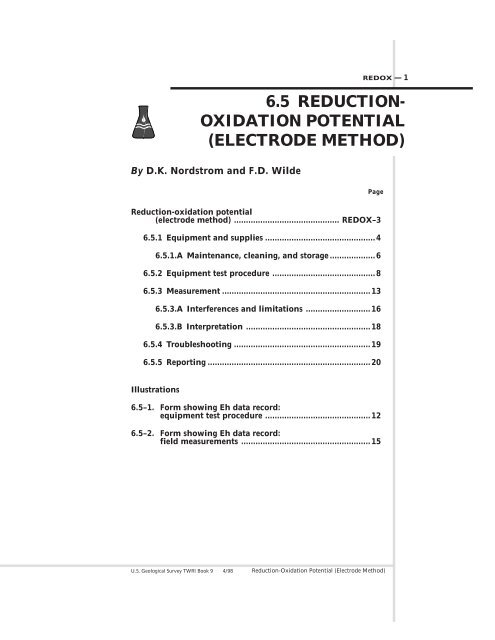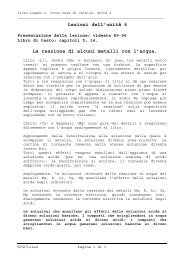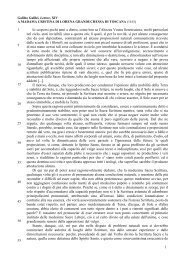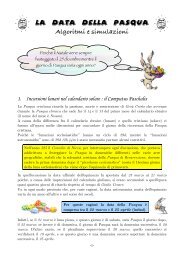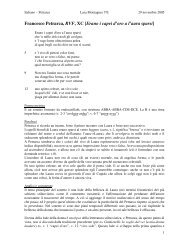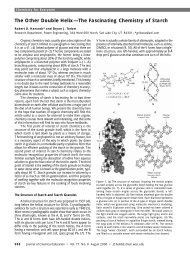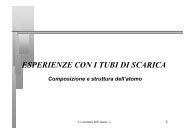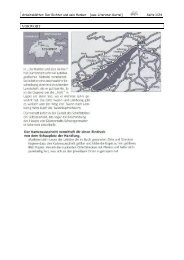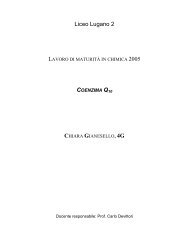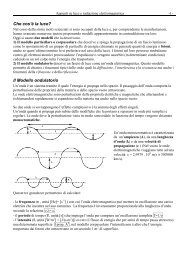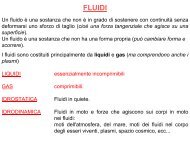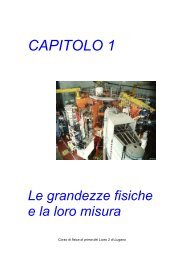6.5 REDUCTION- OXIDATION POTENTIAL (ELECTRODE METHOD)
6.5 REDUCTION- OXIDATION POTENTIAL (ELECTRODE METHOD)
6.5 REDUCTION- OXIDATION POTENTIAL (ELECTRODE METHOD)
Create successful ePaper yourself
Turn your PDF publications into a flip-book with our unique Google optimized e-Paper software.
REDOX —1<strong>6.5</strong> <strong>REDUCTION</strong>-<strong>OXIDATION</strong> <strong>POTENTIAL</strong>(<strong>ELECTRODE</strong> <strong>METHOD</strong>)By D.K. Nordstrom and F.D. WildePageReduction-oxidation potential(electrode method) ............................................ REDOX–3<strong>6.5</strong>.1 Equipment and supplies ..............................................4<strong>6.5</strong>.1.A Maintenance, cleaning, and storage ...................6<strong>6.5</strong>.2 Equipment test procedure ...........................................8<strong>6.5</strong>.3 Measurement ..............................................................13<strong>6.5</strong>.3.A Interferences and limitations ...........................16<strong>6.5</strong>.3.B Interpretation ....................................................18<strong>6.5</strong>.4 Troubleshooting .........................................................19<strong>6.5</strong>.5 Reporting ....................................................................20Illustrations<strong>6.5</strong>–1. Form showing Eh data record:equipment test procedure ............................................12<strong>6.5</strong>–2. Form showing Eh data record:field measurements ......................................................15U.S. Geological Survey TWRI Book 9 4/98Reduction-Oxidation Potential (Electrode Method)
2—REDOXTables<strong>6.5</strong>–1. Equipment and suppliesused for Eh measurements .............................................4<strong>6.5</strong>–2. Standard half-cell potentials of selected referenceelectrodes as a function of temperature andpotassium chloride reference-solutionconcentration, in volts ...................................................9<strong>6.5</strong>–3. Eh of ZoBell’s solution as a function of temperature ...9<strong>6.5</strong>–4. Troubleshooting guide for Eh measurement ...............19Reduction-Oxidation Potential (Electrode Method) U.S. Geological Survey TWRI Book 9 4/98
REDOX —3<strong>REDUCTION</strong>- <strong>6.5</strong><strong>OXIDATION</strong> <strong>POTENTIAL</strong>(<strong>ELECTRODE</strong> <strong>METHOD</strong>)In contrast to other field measurements, the determination ofthe reduction-oxidation potential of water (referred to as redox)should not be considered a routine determination. Measurementof redox potential, describedhere as Eh measurement,is not recommendedin general because of thedifficulties inherent in itstheoretical concept and itspractical measurement (see“Interferences and Limitations,”section <strong>6.5</strong>.3.A). Eh measurement mayshow qualitative trendsbut generally cannot beinterpreted as equilibriumvalues.Reduction-oxidationpotential (as Eh): ameasure of theequilibrium potential,relative to thestandard hydrogenelectrode, developed atthe interface betweena noble metalelectrode and anaqueous solutioncontainingelectroactive redoxspecies. Determinations of redoxusing the platinum(or other noble metal)electrode method (Eh)are valid only when redoxspecies are (a) electroactive,and (b) present in the solution at concentrationsof about 10 -5 molal and higher. Redox species in natural watersgenerally do not reach equilibrium with metal electrodes.Procedures for equipment calibration (test procedures) and Ehmeasurement are described in this section for the platinum electrodeonly. Although the general guidance given here applies toother types of redox electrodes (such as gold and glassy carbonelectrodes), it is necessary to consult the manufacturer’s instructionsfor correct use of the specific electrode selected. Concentrationsof redox species can be determined by direct chemicalanalysis instead of using the electrode method (Baedecker andCozzarelli, 1992).U.S. Geological Survey TWRI Book 9 4/98Reduction-Oxidation Potential (Electrode Method)
REDOX —7TECHNICAL NOTE: Disassembly of the electrode is not recommendedfor routine cleaning and should only be usedwhen absolutely needed. Additional cleaning and reconditioningprocedures are discussed in NFM 6.4 and inAmerican Public Health Association and others (1992),American Society for Testing and Materials (1990),Edmunds (1973), Adams (1969), and Callame (1968).StorageFor short-term storage, immerse the electrode in deionized waterto above the electrode junction and keep the fill hole plugged toreduce evaporation of the filling solution. The recommended proceduresfor long-term storage of electrodes vary with the type ofelectrode and by manufacturer. The Orion combination electrodesare stored dry after rinsing precipitates from outside ofthe electrode, draining the filling solution from the chamber,and flushing it with water (consult the manufacturer’s cleaninginstructions). The electrode connector ends must be kept clean.Clean them with alcohol, if necessary. Store the connector endsin a plastic bag when not in use.Some of the procedures recommended herein forequipment operation may be out of date ifthe equipment being used is different from thatdescribed or incorporates more recent technologicaladvances—follow the manufacturer’s instructions.U.S. Geological Survey TWRI Book 9 4/98Reduction-Oxidation Potential (Electrode Method)
8—REDOX<strong>6.5</strong>.2 EQUIPMENT TEST PROCEDUREEh measuring systems can be tested for accuracy but they cannotbe adjusted. Eh equipment must be tested, either in the laboratoryor in the field, against a ZoBell’s standard solution beforemaking field measurements. In general, field testing with ZoBell’sis not required, but the protocol used will depend on study needs. Before using, check that the ZoBell’s solution has not exceededits shelf life. Test the Eh equipment using the ZoBell’s solution before andafter field use. Be aware that:— ZoBell’s is toxic and needs to be handled with care.— ZoBell’s reacts readily with minute particles of iron, dust,and other substances, making field use potentially difficultand messy.The Eh measurements are made by inserting a platinum electrodecoupled with a reference electrode into the solution to be measured.The resulting potential, read directly in millivolts from apotentiometer (such as a pH meter), is corrected for the differencebetween the standard potential of the reference electrodebeing used at the solution temperature and the potential of thestandard hydrogen electrode (table <strong>6.5</strong>–2).TECHNICAL NOTE: E refis the whole-cell potential of thereference electrode in ZoBell’s solution.E ref= 238 mV (saturated KCl, immersed with the platinumelectrode in ZoBell’s at 25°C) is the measured potential ofthe silver:silver-chloride (Ag:AgCl) electrode;E ref= 185.5 mV (saturated KCl, immersed with the platinumelectrode in ZoBell’s at 25°C) is the measured potentialof the calomel (Hg:HgCl 2) electrode;E° = 430 mV is the standard electrode potential of ZoBell’ssolution measured against the hydrogen electrode at 25°C.Reduction-Oxidation Potential (Electrode Method) U.S. Geological Survey TWRI Book 9 4/98
EXAMPLE:REDOX —11Example of the equipment test procedure using asilver:silver chloride-saturated KCl (Ag:AgCl) electrode.where:Eh = emf + E refEh is the potential (in millivolts) of the sample solutionrelative to the standard hydrogen electrode,emf or E measuredis the electromotive force or potential (inmillivolts) of the water measured at the sampletemperature,E refis the reference electrode potential of the ZoBell’ssolution corrected for the sample temperature (table<strong>6.5</strong>–2).a. Follow steps 1–5 (above). For this example,• Measured temperature = 22°C• emf = 238 mV.b. Check table <strong>6.5</strong>–2. The interpolated referencepotential = 202 mV for Ag:AgCl−saturated KCl at22°C.c. From Eh = emf + E refEh (ZoBell’s) = 238 mV + 202 mV = 440 mV.d. Check table <strong>6.5</strong>–3. The test value of 440 mV is within± 5 mV of 438 mV from table <strong>6.5</strong>–3. Thus, theequipment is functioning well and ready for fielduse.Check the date on Zobell’s solution—do not usesolution past its expiration date.U.S. Geological Survey TWRI Book 9 4/98Reduction-Oxidation Potential (Electrode Method)
12 — REDOXEh Data RecordEquipment Test ProcedureEquipment description and identification (model and serial and/or W number):Meter ____________________________________________________________________________________Eh electrode _________________________Reference electrode _________________________ZoBell’s solution: Lot # ____________ Date: prepared ___________ expired ___________Before sample Eh: After sample Eh:1. Temperature of ZoBell’s solution: T = _________________ _________________(after equilibration to ambient temperature)2. Observed potential (in millivolts) of ZoBell’srelative to measuring electrode, atambient temperature (E measured or emf): emf = _________________ _________________3. Reference electrode potential (in millivolts)at ambient temperature from table <strong>6.5</strong>–2(E ref ): E ref = _________________ _________________4. Calculate Eh of ZoBell's: Eh = emf+E ref Eh= _________________ _________________5. Theoretical potential (in millivolts)of ZoBell's at ambient temperaturefrom table <strong>6.5</strong>–3: Eh (theoretical)= _________________ _________________6. Subtract calculated Eh from Eh theoretical(Zobell's)(step 4 minus step 5) ∆Eh= _________________ _________________7. Check: is ∆Eh within ± 5 mV? Observations: ____________________________________Figure <strong>6.5</strong>–1. Eh data record: equipment test procedure.Reduction-Oxidation Potential (Electrode Method) U.S. Geological Survey TWRI Book 9 4/98
REDOX —13MEASUREMENT <strong>6.5</strong>.3To obtain accurate results, it is necessary to prevent losses andgains of dissolved gases in solution. Consult NFM 6.0 for informationon precautions and general procedures used in samplecollection and NFM 6.2 for a description of the flowthrough cellused in dissolved-oxygen determination (the spectrophotometricmethod). Chemical, physical, and biological reactions can cause theEh of water to change significantly within minutes or evenseconds after the collection of a sample.Water samples cannot be preserved and stored for the Ehmeasurement.Use equipment that eliminates sample aeration and operatethe equipment to meet this goal. If using a flowthrough chamberor cell:— Use tubing that is impermeable (relatively) to oxygen.— Channel the sample flow through an airtight cell (closedsystem) constructed specifically to accommodate redoxor ion-specific electrodes, temperature, and other sensors.— Connections and fittings must be airtight.— Purge atmospheric oxygen from the sample tubing andassociated flow channels before measuring Eh.Do not use pumping systems in which inert gas contactsand lifts the sample to the surface: the gas could stripgaseous redox species from the water.Measure Eh in situ with a submersible instrument or use an airtightflowthrough system.First:1. Record the type of reference-electrode system being used (fig.<strong>6.5</strong>–1).2. Check for the correct electrode filling solution. If working invery hot or boiling waters, change the reference electrode fillingsolution daily.3. Keep the electrode surface brightly polished.U.S. Geological Survey TWRI Book 9 4/98Reduction-Oxidation Potential (Electrode Method)
14 — REDOXTECHNICAL NOTE: Temperature determines the Eh referencepotential for a particular solution and electrode pair,and may affect the reversibility of the redox reactions, themagnitude of the exchange current, and the stability ofthe apparent redox potential reading. The observed potentialof the system will drift until thermal equilibrium isestablished. Thermal equilibrium can take longer than30 minutes but it is essential before beginning themeasurements.Next, measure the Eh and complete the field form (fig.<strong>6.5</strong>–2):1. Select an in situ or closed-system sampling method. Immersethe electrodes and temperature sensors in the sample water.• In situ (or downhole)—Lower the sensors to the depth desiredand follow the manufacturer’s recommendations.• Closed-system flow cell—Check that the connections andsensor grommets do not leak, and that the water beingpumped fills the flowthrough cell.2. Allow the sensors to reach thermal equilibrium with the aqueoussystem being measured and record the time lapsed.• It is essential that platinum electrodes be flushed with largevolumes of sample water to obtain reproducible values.• Record the pH and temperature of the sample water.3. Switch the meter to the millivolt function.• Allow the reading to stabilize (±5 mV).• Record the value and temperature (see the TECHNICAL NOTE thatfollows step 7, below).• Stabilization should occur within 30 minutes.4. Take readings of the sample temperature and potential (in millivolts)every few minutes for the first 15 to 20 minutes.• It is best to stop the flow of the sample while the reading isbeing taken to prevent streaming-potential effects.• After 15 to 20 minutes, begin to record the time, temperature,and potential in plus or minus millivolts about every 10minutes. Continue until 30 minutes have passed from the initialmeasurement and until the measurements indicate a constantpotential.Reduction-Oxidation Potential (Electrode Method) U.S. Geological Survey TWRI Book 9 4/98
Eh Data RecordREDOX —155. After the measurements have been completed for the day, rinsethe electrode(s) thoroughly with deionized water.If field calibration is required for a study,a. Place the electrode(s) and other sensors in ZoBell’s solutionthat has been equilibrated to the temperature of theaqueous system to be measured. The electrode(s) must nottouch the container, and the solution must cover thereference junction.b. Allow the electrode to reach thermal equilibrium (15 to30 minutes).c. Record the potential reading.d. Follow steps 5–7 of the equipment test procedure in section<strong>6.5</strong>.2.6. Record all data and calculate Eh (see EXAMPLE, section <strong>6.5</strong>.2).Fill out the Eh data record form for field measurements (fig.<strong>6.5</strong>–2).Field Measurements1. Temperature and pH of system measured: T =pH =Field EhField Eh12. Time to thermal equilibration:Measurement began atMeasurement ended at3. Measured potential of water system (mV): emf =4. Reference electrode potential mV of ZoBell’sat sample temperature: E ref =5. Calculate sample Eh: emf + E ref(add step 3 + step 4): Eh =6. Field measurements should agree within about 10 mV.Observations:1 The second measurement is necessary for quality control.Figure <strong>6.5</strong>–2. Eh data record: field measurements.U.S. Geological Survey TWRI Book 9 4/98Reduction-Oxidation Potential (Electrode Method)
16 — REDOX7. Quality control—Repeat the measurement.TECHNICAL NOTE: The response of the Eh measurementsystem may be considerably slower than that of the pHsystem and that response also may be asymmetrical: thetime required for stabilization may be longer when movingfrom an oxidizing to reducing environment or vice versa.If the readings do not stabilize within about 30 minutes,record the potential and its drift; assume a singlequantitative value is not possible. If an estimate of anasymptotic final (hypothetical) potential in such a driftingmeasurement is desired, refer to the method used byWhitfield (1974) and Thorstenson and others (1979).<strong>6.5</strong>.3.AINTERFERENCES AND LIMITATIONSMeasurements should not be carried out without an awarenessof the interferences and limitations inherent in the method. Organic matter and sulfide may cause contamination of theelectrode surface, salt bridge, or internal electrolyte, whichcan cause drift or erratic performance when reference electrodesare used (American Public Health Association and others,1992). Hydrogen sulfide can produce a coating on the platinum electrodethat interferes with the measurement if the electrode isleft in sulfide-rich water for several hours (Whitfield, 1974;Sato, 1960). The platinum single and combination redox electrodes mayyield unstable readings in solutions containing chromium,uranium, vanadium, or titanium ions and other ions that arestronger reducing agents than hydrogen or platinum (OrionResearch Instruction Manual, written commun., 1991). Do not insert redox electrodes into iron-rich waters directlyafter electrode(s) contact with ZoBell’s. An insoluble blue precipitatecoats the electrode surface because of an immediatereaction between ferro- and ferricyanide ions in ZoBell’s withferrous and ferric ions in the sample water, causing erraticreadings.Many elements with more than one oxidation state do not exhibitreversible behavior at the platinum electrode surface andsome systems will give mixed potentials, depending on the presenceof several different couples (Barcelona and others, 1989;Bricker, 1982, p. 59–65; Stumm and Morgan, 1981, p. 490–495;Reduction-Oxidation Potential (Electrode Method) U.S. Geological Survey TWRI Book 9 4/98
REDOX —17Bricker, 1965, p. 65). Methane, bicarbonate, nitrogen gas, sulfate,and dissolved oxygen generally are not in equilibrium withplatinum electrodes (Berner, 1981).TECHNICAL NOTE: Misconceptions regarding the analogybetween Eh (pe) and pH as master variables and limitationson the interpretation of Eh measurements are explainedin Hostettler (1984), Lindberg and Runnells (1984),Thorstenson (1984), and Berner (1981). To summarize:(1) Hydrated electrons do not exist in meaningful concentrationsin most aqueous systems—in contrast, pH representsreal activities of hydrated protons. Eh may be expressedas pe, the negative logarithm of the electron activity,but conversion to pe offers no advantage when dealingwith measured potentials.(2) Do not assume that redox species coexist inequilibrium. Many situations have been documentedin which dissolved oxygen coexists with hydrogensulfide, methane, and ferrous iron.• The practicality of Eh measurements is limited toiron in acidic mine waters and sulfide in waters undergoingsulfate reduction.• Other redox species are not sufficiently electroactiveto establish an equilibrium potential at the surface ofthe conducting electrode.(3) A single redox potential cannot be assigned to adisequilibrium system, nor can it be assigned to a watersample without specifying the particular redox species towhich it refers. Different redox elements (iron, manganese,sulfur, selenium, arsenic) tend not to reach overallequilibrium in most natural water systems; therefore, asingle Eh measurement generally does not represent thesystem.U.S. Geological Survey TWRI Book 9 4/98Reduction-Oxidation Potential (Electrode Method)
18 — REDOX<strong>6.5</strong>.3.BINTERPRETATIONA rigorous quantitative interpretation of a measurement of Ehrequires interactive access to an aqueous speciation code. Exercisecaution when interpreting a measured Eh using the Nernstequation. The Nernst equation for the simple half-cell reaction(M I (aq) = MII (aq) + e− ) isEh = E o + 2.303RT/nF log (a II M(aq) / aI M(aq) )where:R = gas constant;T = temperature, in degrees kelvin;n = number of electrons in the half-cell reaction;F = Faraday constant; anda I and M(aq) aII = thermodynamic activities of the free ions M(aq) MI (aq)and M II and not simply the analytical concentrationsof total M in oxidation states I and II,(aq)respectively.Measurements of Eh are used to test and evaluate geochemicalspeciation models, particularly for suboxic and anoxic groundwatersystems. Eh data can be useful for gaining insights on theevolution of water chemistry and for estimating the equilibriumbehavior of multivalent elements relative to pH for an aqueoussystem. Eh can delineate qualitatively strong redox gradients; forexample, those found in stratified lakes and rivers with an anaerobiczone, in an oxidized surface flow that becomes anaerobic afterpassing through stagnant organic-rich systems, and in minedrainagedischarges.Reduction-Oxidation Potential (Electrode Method) U.S. Geological Survey TWRI Book 9 4/98
REDOX —19Contact the instrument manufacturer if the suggestions in table<strong>6.5</strong>–4 fail to resolve the problem. Check the voltage of the batteries.TROUBLESHOOTING <strong>6.5</strong>.4 Always start with good batteries in the instruments and carryspares.Table <strong>6.5</strong>–4. Troubleshooting guide for Eh measurement[±, plus or minus; mV, millivolts; emf, electromotive force]SymptomPossible corrective actionEh of ZoBell's solutionCheck meter operation:exceeds theoretical by±5 mV • Use shorting lead to establish meter reading at zero mV.Excessive drift• Check/replace batteries.Erratic performance • Check against backup meter.Poor response whenusing paired electodesCheck electrode operation:• Check that electrode reference solution level is to thefill hole.• Plug questionable reference electrode into referenceelectrode jack and another reference electrode in goodworking order of the same type into the indicatorelectrode jack of the meter; immerse electrodes in apotassium chloride solution, record mV, rinse off andimmerse electrodes in ZoBell's solution. The two mVreadings should be 0 ± 5 mV. If using different electrodes(Ag:AgCl and Hg:HgCl2), reading should be 44 ±5 mV for a good reference electrode.• Polish platinum tip with mild abrasive (crocus cloth,hard eraser, or a 400–600-grit wet/dry Carborundumpaper), rinse thoroughly with deionized water. Use aKimwipe if these abrasives are not available.• Drain and refill reference electrolyte chamber.• Disconnect reference electrode. Drain and refill electrolytechamber with correct filling solution. Wipe offconnectors on electrode and meter. Use backupelectrode to check the emf.• Read emf with fresh aliquot of ZoBell’s solution;prepare fresh ZoBell's solution if possible.• Recondition electrode by cleaning with aqua regia andrenewing filling solution—this is a last resort.U.S. Geological Survey TWRI Book 9 4/98Reduction-Oxidation Potential (Electrode Method)
20 — REDOX<strong>6.5</strong>.5 REPORTINGReport the calculated Eh in mV to two significant figures.Potentials are reported to the nearest 10 mV, along with the temperatureat which the measurement was made, the electrode systememployed, and the pH at time of measurement.Reduction-Oxidation Potential (Electrode Method) U.S. Geological Survey TWRI Book 9 4/98


